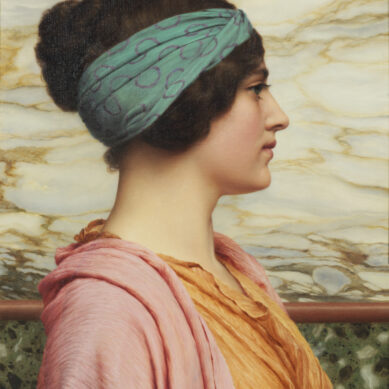You searched
Painter
Benvenuto Ferrazzi
Are you interested in the sales or the purchase of his artworks?
We buy works of this artist
and of other painters and sculptors from the 16th century to the first half of the 20th century
The Berardi gallery offers a free and without obligation service for evaluation of ancient and modern art . To find your way in the art market, very complex and full of nuances, it is better to rely on a professional consultant who can answer fast and concretely to your needs. The clarity of the answers will resolve effectively the need to estimate or sell an asset.
Contact us immediately without commitment
Answers also in 24 hours:
Benvenuto Ferrazzi
Benvenuto Ferrazzi
Benvenuto Ferrazzi was born in Castel Madama in 1892 and is the brother of the more famous Ferruccio (1891-1978). An independent and eccentric artist, he did not fit into any specific movement. His earliest training was with his father Stanislao, a painter, together with his brother Ferruccio, from whom he differed from the very beginning.
At a young age, he changed his first name Riccardo to Benvenuto, in honour of his favourite sculptor Benvenuto Cellini. A bohemian artist, restless creator of a singular and unique language, he led an unusual life as a vagabond: he had no fixed abode and was hosted by religious congregations for whom he produced sacred images. For some time, for example, he lived near the mortuary of Santa Lucia in Selci, in the Monti district. Even the subjects and themes tackled by Benvenuto Ferrazzi have nothing usual or common about them.
A tormented and bohemian artist
Spirituality, esotericism, personal and collective visions are part of his graphic works, in which the thick outlines of figures and architecture enclose bright colours and two-dimensional backgrounds, offering an almost cartoonish language.
The artist’s torment can also be seen in the places portrayed in his works: not only a fascinating and unknown Rome, but also the disturbing and anguished world of hospitals, asylums and morgues.
He exhibited his first works in a one-man show at the Galleria dell’Epoca in Rome in 1918, where he was an immediate success with the public and the critics. In the meantime, his brother Ferruccio introduced him to Anton Giulio Bragaglia (1890-1960) who invited him to exhibit in his Casa d’Arte in 1921.
Between reality and vision: an unusual and hidden Rome
He loved wandering around the alleyways of Rome, especially between Trastevere and Borgo, timeless places that were the protagonists of his visionary canvases, revealing enigmas and settings that recall a delicate and fabulous magical realism. Atmospheres between the lugubrious and the oneiric come together in compositions in which views of Rome are filled with figures invented or encountered in the streets, as seen in many works exhibited at the Sindacali and Quadriennali in Rome during the 1930s.
Via dei Cappellari and Colosseo were presented at the 1930 Lazio Trade Union Exhibition. At the 1932 edition he exhibited Ponte quattro Capi and Il pericoloso. Martirio di San Sebastiano, Il sor Barbetta, L’attesa, Il ciabattino and Le ombre date from 1934.
At the Quadriennale in Rome in 1935 he presented nine works: Sor Parasecoli, Vicolo Moroni, Cavalli, Interno di osteria, Il galeotto, Lo scemo, Il Cristo morto and Nonna morta. Paintings that are filled with the moods of the everyday but hidden life of a mysterious and small Rome, which is not celebrated for its majesty, but for the stories of the last and the humble who populate its streets, between crude realism and visionary fantasy.
Foro di Cesare and Foro Olitorio were exhibited at the 1937 Sindacale, Il riffarolo di Trastevere Vicolo della serpe and Monte piccolo Napoli at the 1938 Sindacale. The following year, at the Quadriennale, he exhibited Il ghetto di Roma, Il pittore Stanislao Ferrazzi, La finestrella and Piazza del Catalone.
Throughout the 1940s and 1950s, Benvenuto Ferrazzi continued to live as a vagrant artist, although he exhibited at the most important shows. His definitive consecration took place during his 1951 solo exhibition at the Galleria Fiorani, where one of his most significant paintings, Autoritratto con la morte, appeared. He died in Rome in 1969, at the age of 77.
Elena Lago







